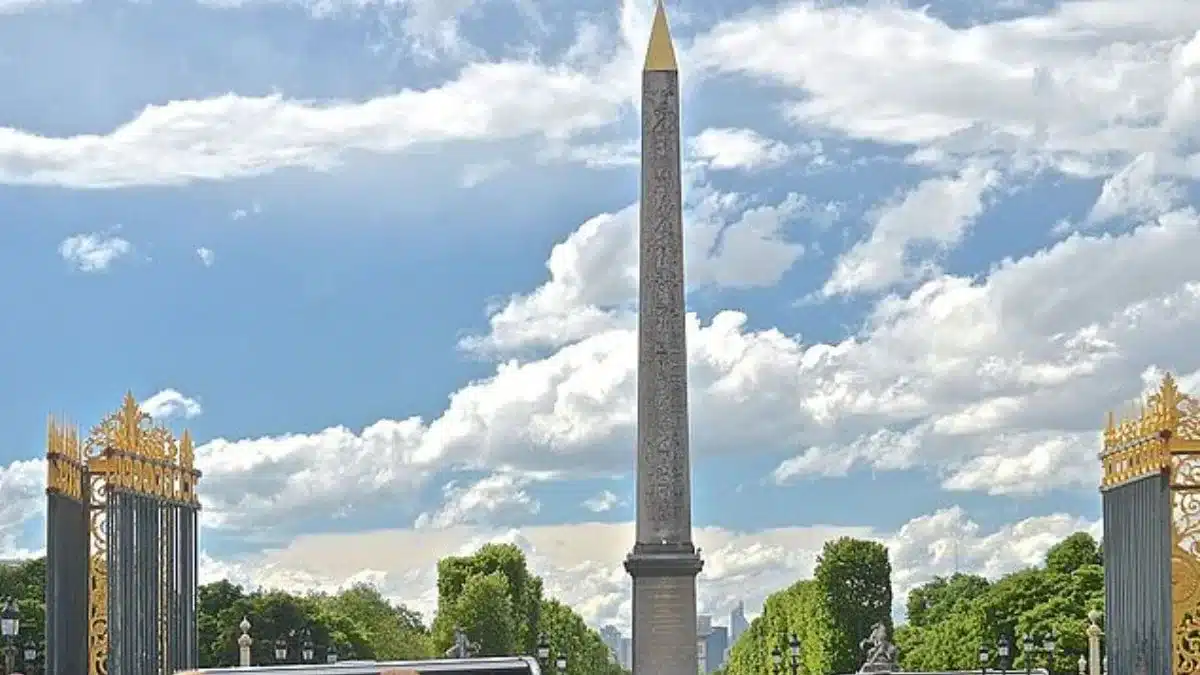Ancient Inscriptions Celebrating Pharaoh Ramesses II Discovered in Paris

An Egyptologist has made a remarkable discovery in Paris, uncovering a series of hidden hieroglyphic inscriptions on a 3,300-year-old obelisk. These inscriptions are believed to have been intended for Egypt’s nobility, serving as propaganda that extols the virtues of the renowned pharaoh Ramesses II. Commissioned by Ramesses II himself, the obelisk originally stood outside the Luxor Temple in Upper Egypt before being gifted to France by Pasha Muhammed Ali, the Ottoman Empire’s sultan.
Discovery of the Hidden Inscriptions
Jean-Guillaume Olette-Pelletier, an Egyptologist from the Institut Catholique de Paris, made the discovery while examining the obelisk. He noted that the hieroglyphs indicated the entrance to the Luxor Temple portico. Despite the absence of literature discussing the various scenes depicted, Olette-Pelletier meticulously studied the images from a distance. His efforts led to the revelation that the obelisk contained hidden hieroglyphic messages, often referred to as cryptographies. These secret texts were typically embedded within the hieroglyphs or concealed in three-dimensional carvings, accessible only to the elite.
The hidden messages on the obelisk’s “Seine side” can only be deciphered from a 45-degree angle. Olette-Pelletier discovered that these messages were designed to be viewed by nobles arriving by boat at the Luxor Temple during the annual Opet festival, a celebration honoring the return of the life forces of the god Amun.
Further Studies and Criticism
Olette-Pelletier has identified additional concealed messages on the obelisk, including two rows of hieroglyphs that can convey multiple meanings. For instance, they may suggest that Ramesses II possessed eternal life or even spell out his complete royal name. These findings are slated for publication in the journal Égypte Nilotique et Méditerranéenne.
However, some scholars who were not involved in the research have expressed caution regarding the interpretation of these findings. They emphasize the need for a thorough review once the study is published. Egyptology professor Filip Taterka raised concerns, stating that the inscriptions and imagery located near the top of the obelisk would not have been visible to nobles traveling by boat on the Nile. This criticism highlights the complexities involved in interpreting ancient texts and the importance of context in understanding their significance.
Significance of the Discovery
The discovery of these hidden inscriptions adds a new layer of understanding to the historical context of the obelisk and its connection to ancient Egyptian culture. The obelisk, a symbol of power and divine connection, was originally erected to honor Ramesses II, one of Egypt’s most celebrated pharaohs. The inscriptions likely served not only as a means of glorifying the pharaoh but also as a way to reinforce the social hierarchy of the time.
As the academic community awaits the publication of Olette-Pelletier’s findings, this discovery has already sparked interest in the potential for further exploration of ancient Egyptian artifacts. The obelisk’s hidden messages may provide insights into the beliefs, values, and practices of a civilization that continues to captivate historians and archaeologists alike. The ongoing study of such artifacts is crucial for unraveling the mysteries of ancient Egypt and understanding its enduring legacy.
Observer Voice is the one stop site for National, International news, Sports, Editor’s Choice, Art/culture contents, Quotes and much more. We also cover historical contents. Historical contents includes World History, Indian History, and what happened today. The website also covers Entertainment across the India and World.

